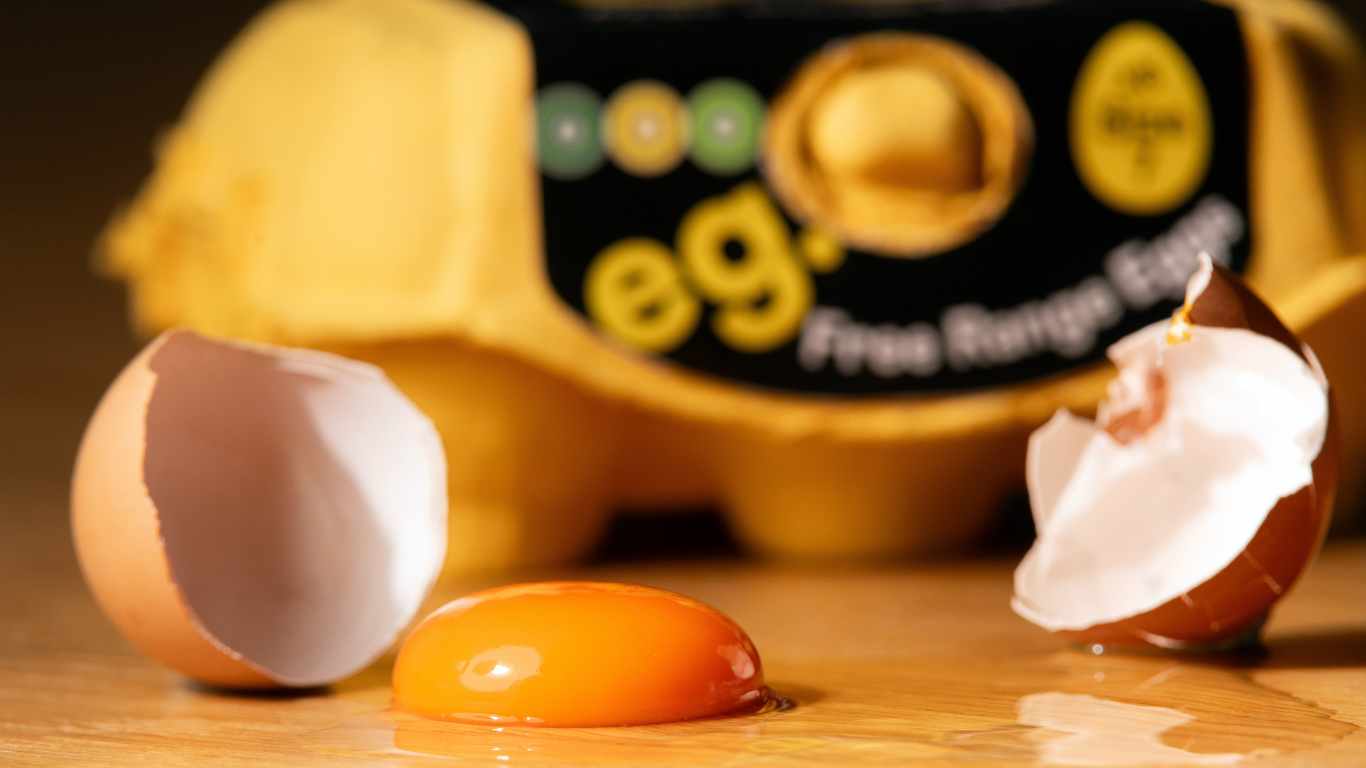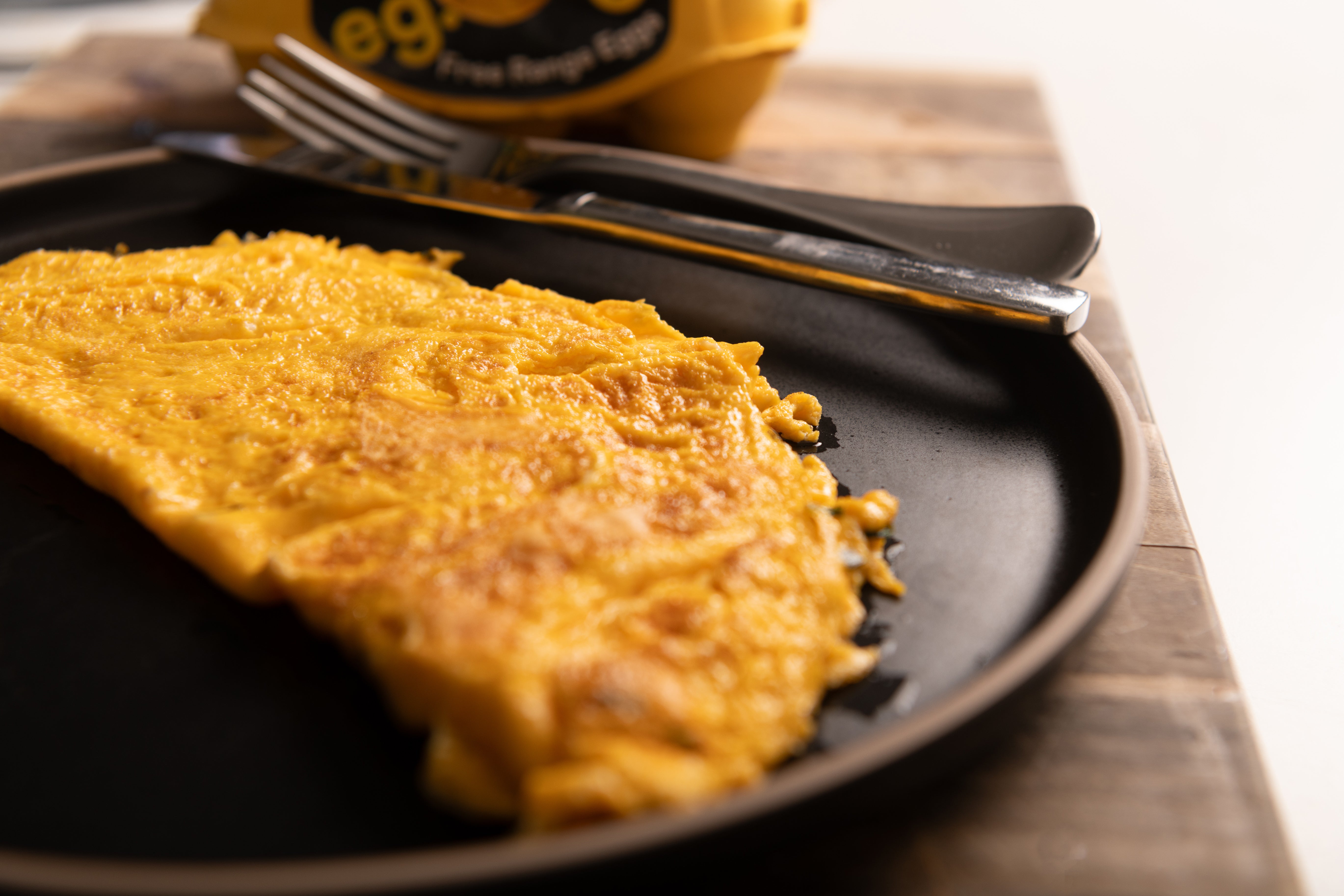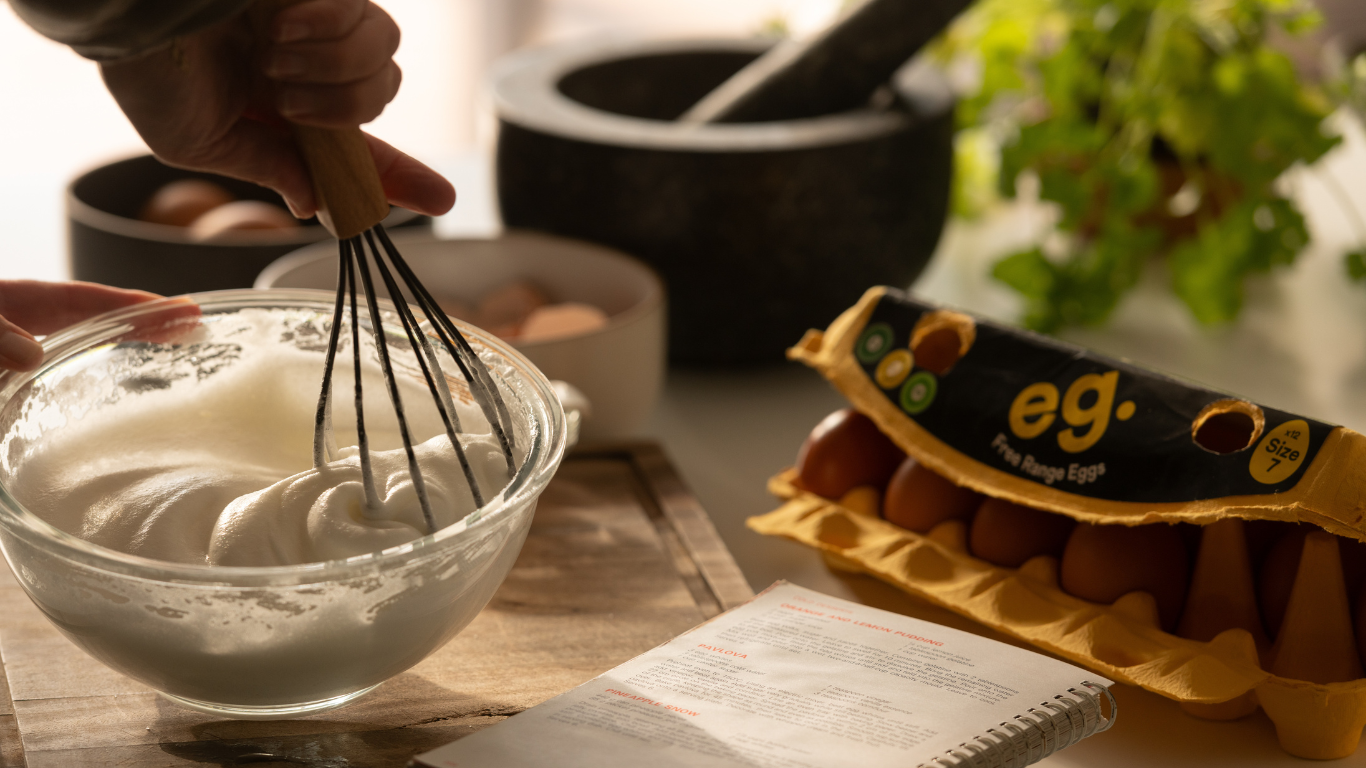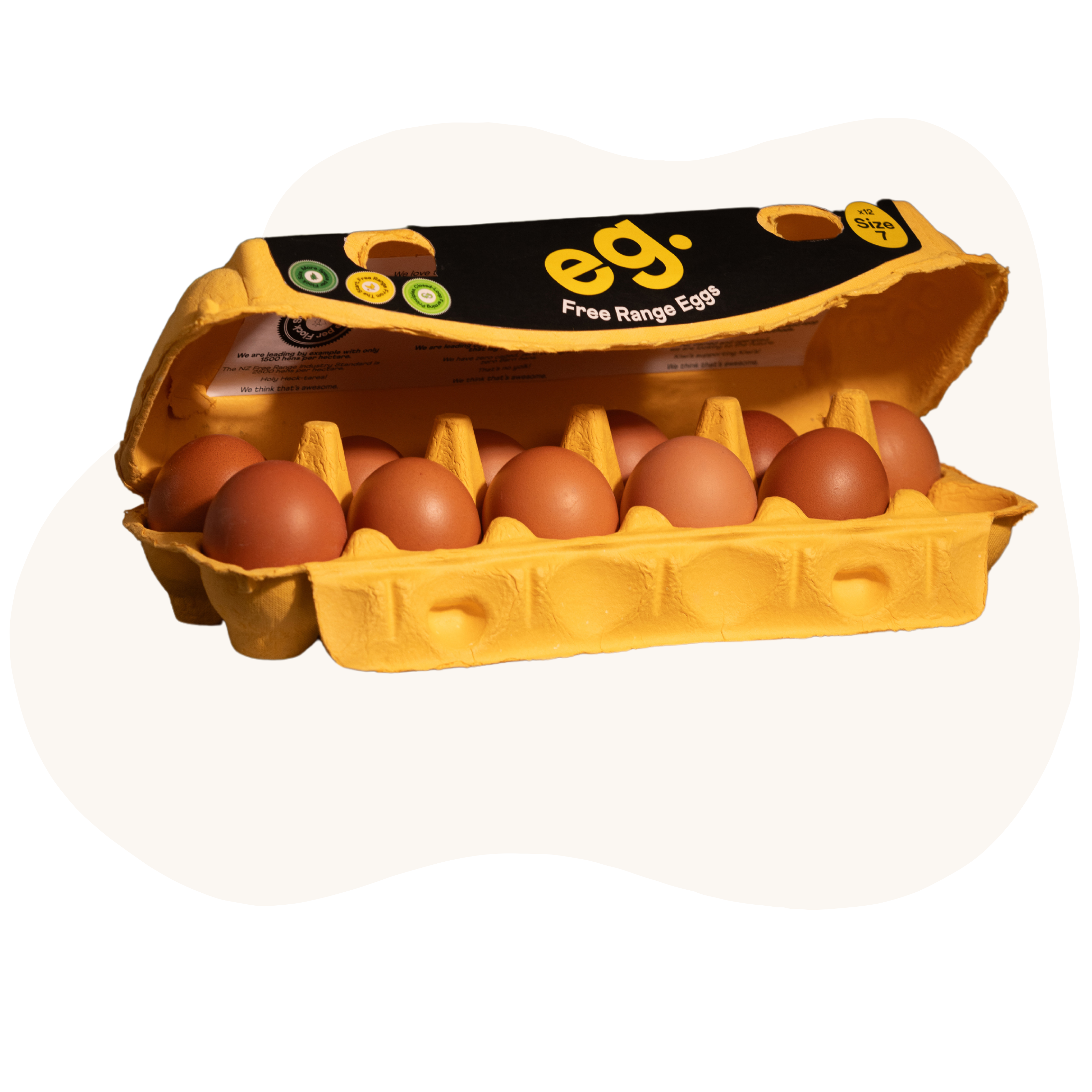Egg-ducation: Cracking Open the Facts on Eggs.

When it comes to chickens and egg production, there's a lot to know! At eg., our mission is to share our knowledge to help people understand the importance of chickens and eggs in the world!
The Anatomy of an Egg
The Shell
Made almost entirely of calcium carbonate, the shell is the egg's first line of defence. It takes a hen up to 20 hours to produce this protective layer! Whether you prefer white or brown eggs, they are egg-sactly the same in nutrition, flavour and cooking applications.
The Membrane
Inner and outer membranes, positioned between the shell and egg white, protect the egg from bacteria. These membranes play a crucial role in keeping your eggs fresh and safe to eat.
The Air Sack
Located at the egg's larger end, the air sack forms as a freshly laid egg cools. As a chicken egg ages, this air sack grows larger — so, the larger the air sack, the older the egg. Understanding this change can help you determine the freshness of your eggs at home, which is crucial for food safety and optimal taste. To test an egg's freshness, place it in water; fresh eggs sink while older ones float.
The Egg White
Also known as albumen, the egg white consists of several proteins and water and is a highly versatile ingredient. It consists of four layers and is responsible for most of the egg's weight.
The Chalaza
This small white strand holds the yolk in the centre of the white. Don't worry if you see it in your bowl — it's perfectly edible and indicates a fresh egg!
The Yolk
The yolk is packed with vitamins A and D, as well as essential minerals and nutrients such as protein, iron, phosphorus, calcium, thiamine and riboflavin. Its colour directly reflects the hen's diet. The richer the colour, the more nutrient-dense the feed!
Share this story
More eg. Articles
How many grams of protein are in an egg?

Omelettes made easy with eg.


